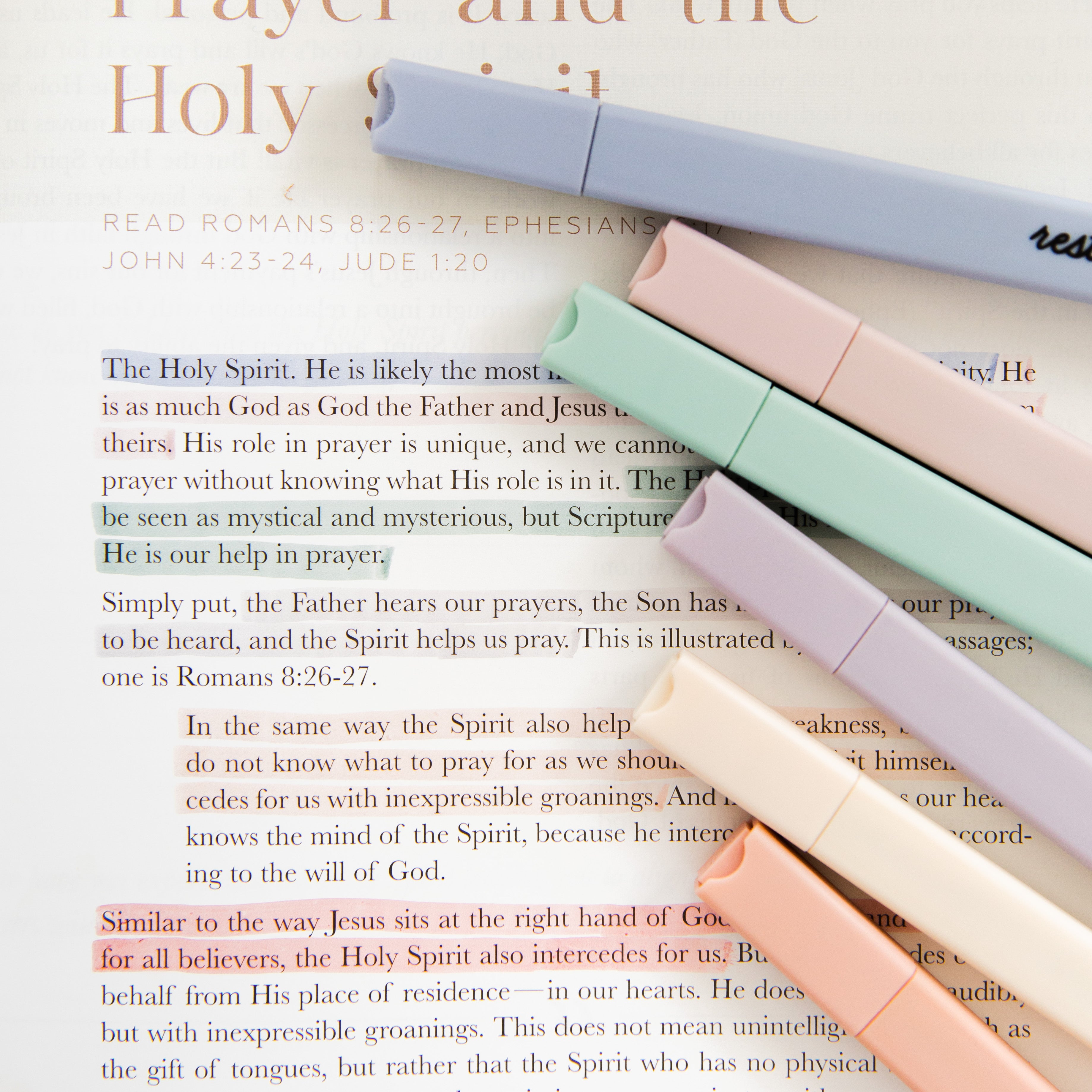Biblical Inerrancy and Historical Reliability (Part 1)
 (adapted from the sermon: The Messiah and the Manuscripts by Michael White)
We have been walking through the Gospel of John at my local church. A few weeks ago, we came to John 7:53-8:11. My husband, the pastor, wrestled with how to handle this passage. Before verse 53, there is a note there. Mine is a note in brackets that says, "
(adapted from the sermon: The Messiah and the Manuscripts by Michael White)
We have been walking through the Gospel of John at my local church. A few weeks ago, we came to John 7:53-8:11. My husband, the pastor, wrestled with how to handle this passage. Before verse 53, there is a note there. Mine is a note in brackets that says, " Is it true that we don't have the originals–yes. But again, that's the case for every ancient writing–and when compared to other historical documents, it's simply incredible how many copies of the NT we have. We have 5,800 copies of the New Testament compared to at most 20 copies of other ancient texts. Of these, 94% of the copies are exactly the same. Think about that for just a second–of all the words in the NT, hand-copied, in some cases by candlelight–that's an incredible degree of accuracy.
Let's think about an illustration that we are probably all familiar with. Do you remember the childhood game of telephone? You pass a message from one end of a group of people to the other and you quickly see how distorted it can become. It can start as "I really hope we get ice cream after this game" to "Cody fell over a beam in gym." It is very difficult for us to even get a sentence passed among a group of people with any kind of accuracy. So when we think about the accuracy of the copies of the Bible, they are 94% accurate with 138,000 words.
Well, what about the 6% that's not the same? Well, of that, around 3% is made up of copying errors (spelling mistakes, right?–because they didn't have spell check!) and obvious nonsensical things (skipping a line by accident–from one word in one line to the same word in the next). And then the remaining 3% are things that are at least deserving of scholarly discussion, where there is debate about what the original text would have said. But of that 3%, there's still an extremely high degree of confidence about the original, and there's nothing of any significance that would change or affect anything we believe. The process of working through all this is a rigorous science known as textual criticism–there are clear principles and guidelines that govern this–this isn't just someone's opinion!
But how does all of this relate to the story before us in John 8? Let's fast-forward a 1000+ yrs. We've been talking about all the manuscripts, and all of those manuscripts fit together to form an entire Greek NT.
The most famous Greek New Testament – the basis for the King James Version (KJV) – was published in 1516. This first printed Greek New Testament was assembled by Erasmus, a Dutch scholar and priest. His version of the NT, known as the Textus Receptus, was used as the basis not only for the English translation, and later the KJB, but also for Bibles across Europe. These were the leading Bibles in their languages for 400 years. There's just one thing, though. When Erasmus compiled his Greek NT, he was relying upon Greek manuscripts from the 12th and 13th century–and these were all from one particular family of texts which were themselves late. And so what's happened in 500 years? Well ... a lot, actually!
Since then, a number of older manuscripts have been found, which scholars believe more reliably represent what the original words of the NT were. Think back to our telephone game–the earlier in the process, the less chance for mistakes to creep in. It's the same thing here. The general principle is that older (closer to the originals) is better.
Is it true that we don't have the originals–yes. But again, that's the case for every ancient writing–and when compared to other historical documents, it's simply incredible how many copies of the NT we have. We have 5,800 copies of the New Testament compared to at most 20 copies of other ancient texts. Of these, 94% of the copies are exactly the same. Think about that for just a second–of all the words in the NT, hand-copied, in some cases by candlelight–that's an incredible degree of accuracy.
Let's think about an illustration that we are probably all familiar with. Do you remember the childhood game of telephone? You pass a message from one end of a group of people to the other and you quickly see how distorted it can become. It can start as "I really hope we get ice cream after this game" to "Cody fell over a beam in gym." It is very difficult for us to even get a sentence passed among a group of people with any kind of accuracy. So when we think about the accuracy of the copies of the Bible, they are 94% accurate with 138,000 words.
Well, what about the 6% that's not the same? Well, of that, around 3% is made up of copying errors (spelling mistakes, right?–because they didn't have spell check!) and obvious nonsensical things (skipping a line by accident–from one word in one line to the same word in the next). And then the remaining 3% are things that are at least deserving of scholarly discussion, where there is debate about what the original text would have said. But of that 3%, there's still an extremely high degree of confidence about the original, and there's nothing of any significance that would change or affect anything we believe. The process of working through all this is a rigorous science known as textual criticism–there are clear principles and guidelines that govern this–this isn't just someone's opinion!
But how does all of this relate to the story before us in John 8? Let's fast-forward a 1000+ yrs. We've been talking about all the manuscripts, and all of those manuscripts fit together to form an entire Greek NT.
The most famous Greek New Testament – the basis for the King James Version (KJV) – was published in 1516. This first printed Greek New Testament was assembled by Erasmus, a Dutch scholar and priest. His version of the NT, known as the Textus Receptus, was used as the basis not only for the English translation, and later the KJB, but also for Bibles across Europe. These were the leading Bibles in their languages for 400 years. There's just one thing, though. When Erasmus compiled his Greek NT, he was relying upon Greek manuscripts from the 12th and 13th century–and these were all from one particular family of texts which were themselves late. And so what's happened in 500 years? Well ... a lot, actually!
Since then, a number of older manuscripts have been found, which scholars believe more reliably represent what the original words of the NT were. Think back to our telephone game–the earlier in the process, the less chance for mistakes to creep in. It's the same thing here. The general principle is that older (closer to the originals) is better.
 We now have the complete NT from the year 350, Codex Sinaiticus – a complete book. And even earlier than that, we have a number of papyrus scraps, giving us a number of complete sections of the NT. Beyond that, we also have the rich resource of the church Fathers–working from the time after the apostles on up to AD 451. These men were pounding out doctrine and preaching sermons and planting churches and they were (of course) using the New Testament to do that and quoting it all over the place. They were also writing commentaries on the Scriptures, just like modern scholars do. That's such a rich resource, we could reconstruct the entire NT from their writings alone–even without the manuscripts.
With this foundation of biblical inerrancy and the historical reliability of the Scriptures, we are now better equipped to understand the issue at hand. In the subsequent post, we will look at the reliability of John 7:53-8:11.
We now have the complete NT from the year 350, Codex Sinaiticus – a complete book. And even earlier than that, we have a number of papyrus scraps, giving us a number of complete sections of the NT. Beyond that, we also have the rich resource of the church Fathers–working from the time after the apostles on up to AD 451. These men were pounding out doctrine and preaching sermons and planting churches and they were (of course) using the New Testament to do that and quoting it all over the place. They were also writing commentaries on the Scriptures, just like modern scholars do. That's such a rich resource, we could reconstruct the entire NT from their writings alone–even without the manuscripts.
With this foundation of biblical inerrancy and the historical reliability of the Scriptures, we are now better equipped to understand the issue at hand. In the subsequent post, we will look at the reliability of John 7:53-8:11.









